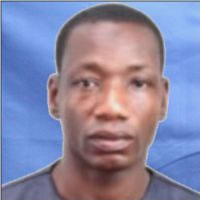Conditions of the Natural and Built Environment
The district has abundant natural resources in the form of water bodies, fertile lands, forests and wildlife. The exploitation of the arable land in district to meet socio-economic needs has adversely affected the fragile environment.
Uncontrolled bush fires, especially during the dry season, and unmanaged excessive felling of trees for residential purposes and charcoal burning is fast threatening the bio-diversity, thus putting the fertility of the soil at risk and reducing the sustainability of potential resources.
There is the need to embark on forestation programme to safeguard the environment while reducing the adverse effects of climate change. There is the need to augment the effort of the climate change mitigation project under the Ghana Social Opportunities Project (GSOP) at Anyinofi.
Road leading to Drobonso
The buildings in the district are either built with cement blocks, sandcrete and mud. The residential housing structures are mostly short with poor ventilation methods. This results in warm conditions during the latter part of the day.
The buildings built are usually associated poor engineering procedures. As a result, buildings with cement blocks usually develop cracks which make them very dangerous to live in.
There is the need to build the capacity of local building artisans to improve upon their skill and technical base to improve upon the structural defects of cement block building. The material used for the walls of buildings does not encourage the painting of houses by residents.
The two most populous communities Drobonso and Anyinofi have few of the houses painted while the majority of buildings in the other settlements are not painted.
It is the scene that one is greeted with upon entering the district from Kumawu, the major road leading to the district capital.
Social and Cultural Structure
The culture of the people in the District could be viewed from different dimensions. This can be seen in terms of their dressing, the food they eat, language spoken, music and dance, art and craft, religious belief, occupation, administration and norms.
Language and Dressing
The population is heterogeneous with Akans forming the dominant ethnic group followed by the Mole-Dagbon ethnic group. Despite this unique feature, the common dialect spoken is the Asante-Twi. However, migrants still stick to speaking their mother tongue. Some of these ethnic groups are Dagomba, Busanga, Mamprusi, Dagaaba among others. Some communities are named after the dominant groups in the communities. Examples of these communities are Mamprusi and Dagomba. The Asante-Twi is the medium of communication in everyday life.
Dressing is also another cultural tool used to identify groups of people. Traditional dresses are usually seen during important cultural and social occasions. Without these events, it is usually difficult to associate people with the various ethnic groups.
Food
Fufu is the staple food that is usually consumed in the District in spite of the presence of a large number of people from northern Ghana. Some of the migrants also stick to their traditional food, tuo zaafi and yam fufu. Meat from wildlife is also a delicacy of people in the District. In view of the presence of River Afram and other smaller rivers in the District, fish is also in abundance and consumed by the population.
Religion, Chieftaincy and Traditional Set Up
There is the general belief in the supremacy of God among the people. This can be seen in their daily lifestyles. In all important occasions, Christian and Muslim prayers are said and libation performed to signify the three dominant religions. |
Chieftaincy exists to preserve the customs, traditional beliefs, values and norms of the people. Stools and Skins signify the authority of chiefs among the various ethnic groups in the country. The chiefs in the District serve the Asanteman Council chaired by the Otumfo, the Asantehene. The paramount chief of Kumawu and Kwamanhene (who is also a sub chief of the Kumawu traditional area), are the landowners of the District. The paramount chief referred to as Barima, has sub-chiefs or caretaker chiefs called Odikro. The implementation of the laws on customs, taboos and setting of moral behavior are vested in the chiefs. The chiefs have their Kontihene, Gyaasehene, Akyeamehene, Sanaahene and others assist the paramount chief in the performance of his duties. The main festival celebrated in the District is Papa Nantwi. It is celebrated every four years by the people in the Kumawu traditional area1.
11 Sekyere Afram Plains is traditionally under the jurisdiction of Kumawu Traditional Council.
The system of inheritance practiced in the District is in two distinct forms: matrilineal and patrilineal system. The matrilineal system on one hand is practiced by the Akan ethnic group who are largely the indigenes. On the other hand, the patrilineal system is practiced by migrants from the northern part of the country.
Date Created : 11/23/2017 6:54:42 AM





 facebook
facebook twitter
twitter Youtube
Youtube TOLL FREE 0800 430 430
TOLL FREE 0800 430 430 +233 593 831 280
+233 593 831 280 GPS: GE-231-4383
GPS: GE-231-4383 info@ghanadistricts.com
info@ghanadistricts.com Box GP1044, Accra, Ghana
Box GP1044, Accra, Ghana